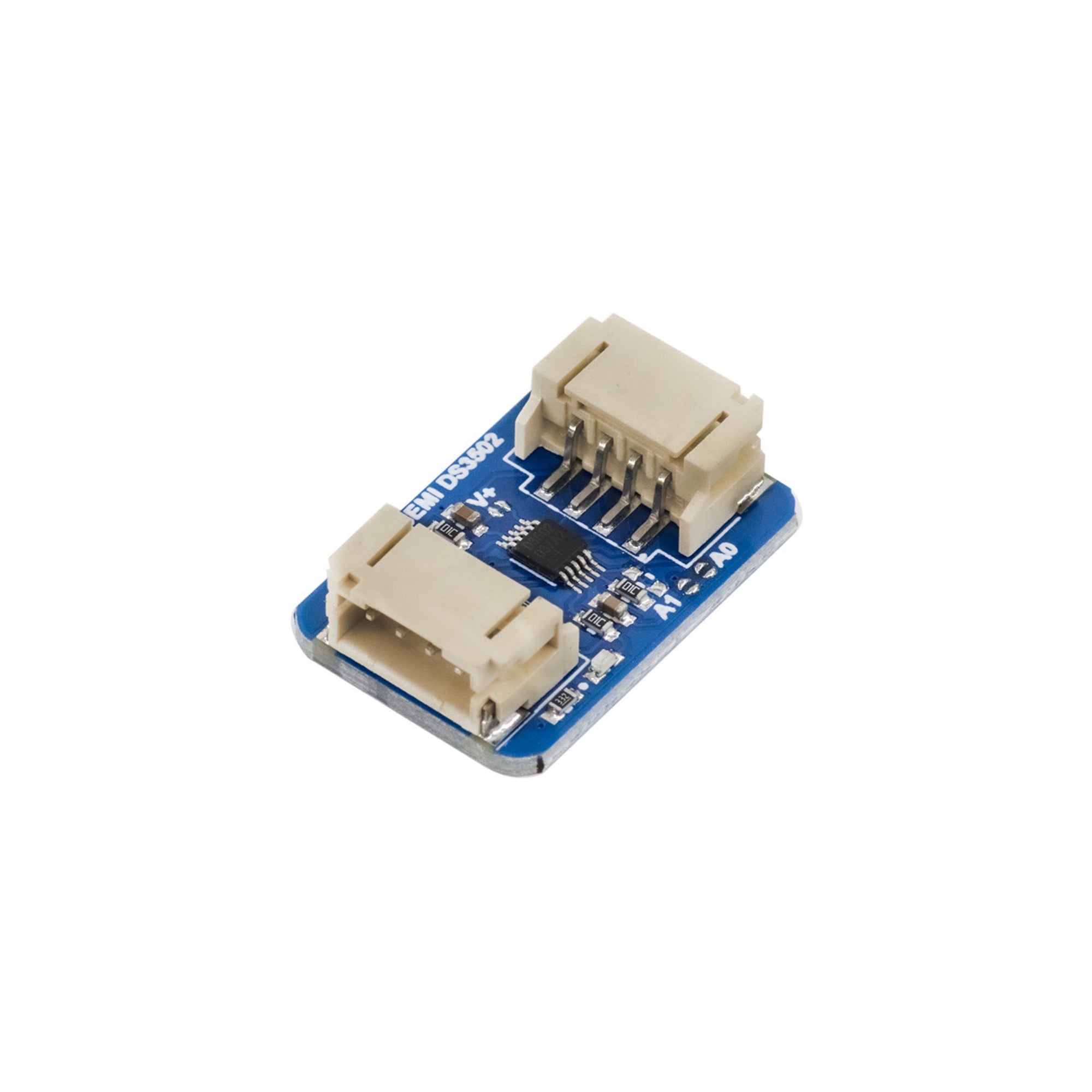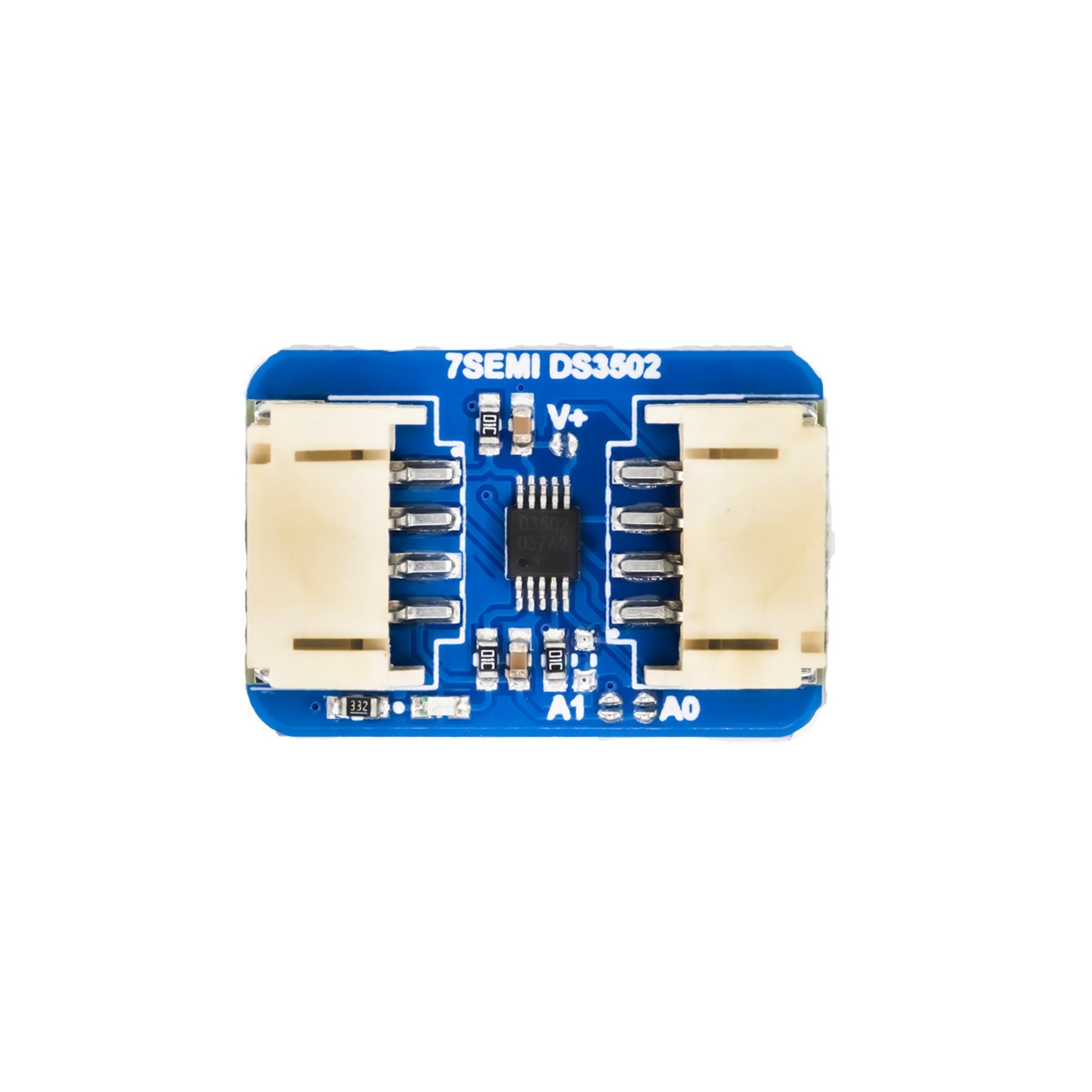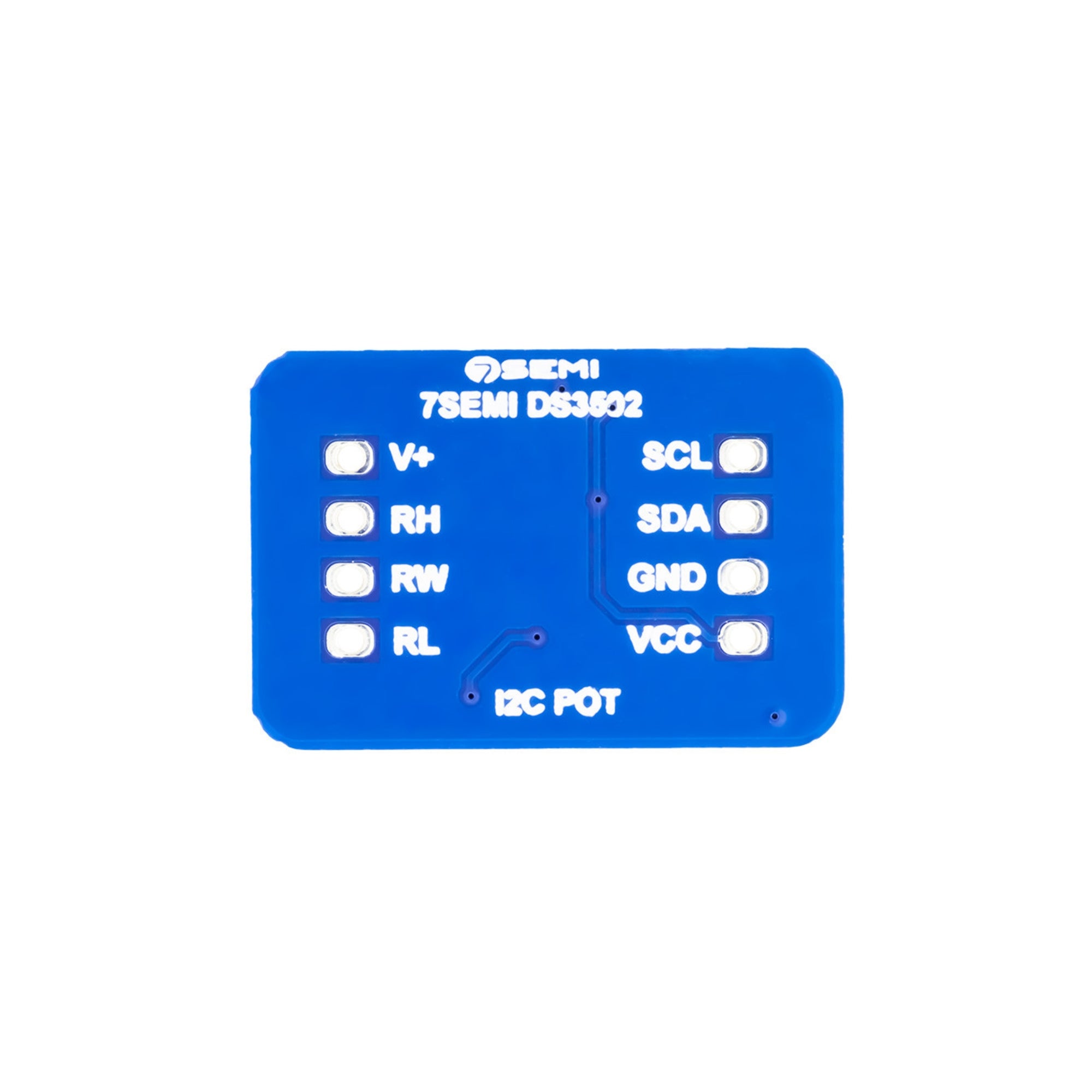Description
7Semi DS3502 I2C Digital 10K Potentiometer Breakout
The 7Semi DS3502 I2C Digital 10K Potentiometer Breakout is a digitally controlled variable resistor module based on the DS3502 IC. It provides a 10KΩ linear-taper potentiometer that can be adjusted through an I²C interface, allowing precise resistance control via microcontrollers. The module offers 128 wiper positions for fine-tuning and maintains its set value in non-volatile memory, ensuring it retains settings after power-off. Compact and easy to interface, it is ideal for applications requiring adjustable voltage, gain control, or brightness tuning without using mechanical potentiometers.
Technical Specifications:
- IC: DS3502 Digital Potentiometer
- Interface: I²C (2-wire serial communication)
- Resistance Value: 10KΩ nominal
- Wiper Positions: 128 steps (0–127)
- Resistance Tolerance: ±20% typical
- Wiper Resistance: 400Ω typical
- Supply Voltage (VDD): 2.7V to 5.5V
- I²C Address: 0x28 (default)
- Non-Volatile Memory: Retains last wiper setting after power-off
- Current Through Wiper: Maximum 2.5mA
- Operating Temperature: -40°C to +125°C
- Logic Level Compatibility: 3.3V and 5V systems
- PCB Type: Compact breakout board with 2.54mm header pins
Features:
- Digitally adjustable 10KΩ potentiometer controlled via I²C
- 128-step wiper position for precise analog adjustment
- Non-volatile memory stores last resistance setting
- Wide operating voltage compatible with 3.3V and 5V systems
- Easy integration with Arduino, ESP32, STM32, and Raspberry Pi
- Eliminates wear and drift associated with mechanical potentiometers
- Low power consumption for battery-based applications
- Simple I²C interface with configurable address options
- Compact PCB for easy prototyping and embedded integration
- Ideal for automatic gain, brightness, or voltage control systems
Applications:
- Digital volume, brightness, or contrast control circuits
- Adjustable voltage dividers and signal conditioning systems
- Sensor calibration and offset adjustment in analog circuits
- Gain control in amplifiers and filters
- Industrial automation and process tuning applications
- Embedded system parameter adjustment
- Audio systems and power supply calibration
- IoT devices requiring programmable analog control
- Educational and prototyping electronics projects
- Replacing traditional potentiometers in digital control environments



